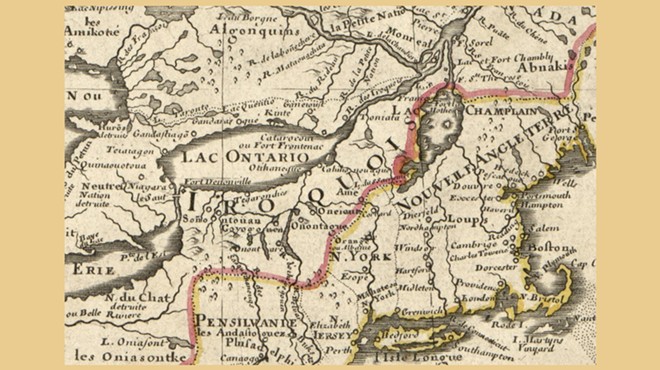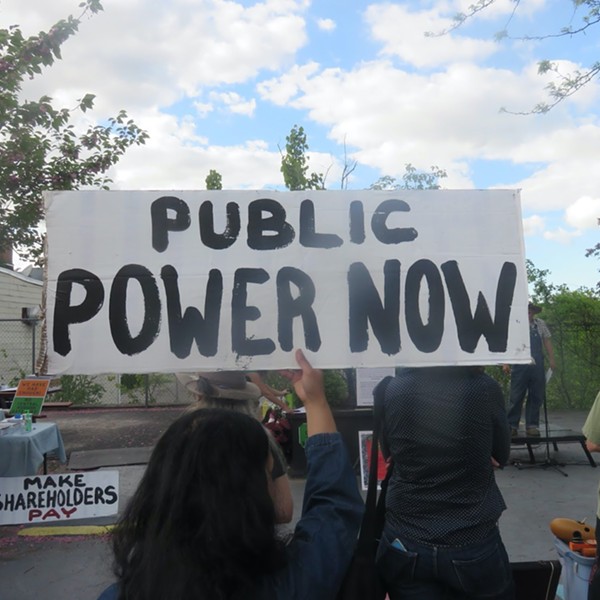Northern Hemisphere summer began June 22 with a series of planetary events, and as often happens, events in close proximity describe a theme. When the Sun made its ingress into the cardinal sign Cancer, it was conjunct an asteroid called Vesta.
This magnificently complex asteroid, I believe, holds the key to understanding how we might go about healing our often injured, burdened, and confused sense of our sexuality. In one word, the method is devotion.
I’ll do my best to describe the qualities of Vesta in a way that makes it possible to feel and experience them—and to put them to use in our relationship experiences. Vesta is primarily about tending the fire within. That fire, and that experience of constantly caring for it, becomes the focal point for organizing space; that is, the psychic space of our lives, our priorities, and our beliefs.
Vesta is represented by a hearth (actually, a chevron, though in mythology it’s a hearth), and that hearth is the center of the home. We make our homes, comfortably or not, primarily within our psyches. The fire is the core fire of human existence, which is inherently sexual and creative. We use this fire for light, for heat, for creative purposes (you could say, to prepare our meals, whatever form they may take on the physical and nonphysical levels of existence).
Honoring this would give our daily lives and our relationships, whether sexual or not, a central concept to work with. Vesta is inherently about one’s relationship with oneself, which is the thing we share with others no matter what form that sharing might take. It may seem a paradox, but there is a touch of the impersonal to Vesta, which to me is about a boundary between self and other that gives everyone a little extra space to be who we are. Yet there is something collective about Vesta as well: We all share the same inner fire, whether we recognize it as the same thing or not.
In the solstice chart, the Sun meets up with Vesta in Cancer, a sign associated with nourishment, nurturing, emotions, mother, and the experience of incarnating. The Sun is about expression. It is the source of all light in the astrological system; it is the central point that holds the solar system together and provides an anchor for awareness and for one’s tangible place in the world. So Sun/Vesta in Cancer is one version of the full expression of Vestal energy.
The next day, there was a New Moon, with Sun, Moon, and Vesta in a precise conjunction. This is the first of many potent lunations (including three eclipses in July and August) that defines the current stretch of time. These eclipses (occurring July 7, August 22, and August 5) will set a brisk pace this summer, opening the door to many unexpected developments. Happening so close to the beginning of a season (with the Sun still at solstice), the Cancer New Moon is connected to events on a large scale, but which feel personal; and personal events that reach past our individual lives toward a collective experience.
Remember, this can be subtle, and noticing that anything of this kind is happening requires inner sensitivity and a sense of context that could truly be described as spiritual.
At the same time there is a conjunction of Venus and Mars in Taurus. A Venus/Mars conjunction brings together the male and female principles, and in Taurus there is the recognition that we each contain both, in our psyches and our bodies. The Taurus connection describes this as a resource that we possess and can share with others, once we take ownership of it ourselves. This is a clue. Much of our sexual and, indeed, relationship pain comes from trying to experience our sexuality without actually being in possession of it first.
This event, too, is occurring in one of those subtle zodiac positions that connects personal events to collective ones—at the precise midpoint of Taurus, where the Sun is each year on Beltane (May 5). You can be sure that plenty of other people are experiencing something similar to what you are. Here as well, we get a sexual theme; Taurus is about sensuality, self-possession, physical contact, and a property called biophilia. This is about resonating with life, which we get in part from the connection between Taurus and Venus. (I covered this quality fairly recently in the March issue; see “Kaleo: Venus Unbound.”)
Let’s take these two factors individually, the Vesta aspect and the Venus/Mars aspect; and then let’s see what they add up to.
Vesta: Tending Fire, Holding Space
I had my first conscious experience of Vestal energy one autumn when I moved into a house in Hurley, New York. I love this experience because it’s an example of how an event in life can open the door to something supposedly mystical or mythological.
At the time we moved in, my housemates and I didn’t have a lot of money, so we couldn’t start up the oil heat; but there was a very nice wood stove and a big pile of wood to go with it. However, the wood was wet, because it was pretty old and the season had been very rainy. We definitely needed heat.
It’s possible to burn wet wood, but it takes a lot of work to get it going, and to keep it going. (It’s also a lot less efficient.) Once the fire was started, it was essential to keep it running hot, and to cycle the firewood into the kitchen so that would have a chance to dry off next to the stove, if possible. This became a 24-hour devotion. The stove had to be tended at least every three or four hours. Being a few years into my astrology work, the Vestal symbolism of tending a hearth was not lost on me. This activity was similar to what the Vestal Virgins had as one of their primary responsibilities: to keep the sacred flame in the city’s central hearth going all the time.
As mystics, we regard outer fire as a symbol of an inner fire. The inner fire is the individual creative source within the psyche. Vesta, the asteroid, is associated with various forms of devotion, such as to work. (Most astrology books you read that mention Vesta will associate it with things like staying late at the office, and avoiding social interaction.) I view Vesta as the place where we must tend to our creative and sexual fires. Basically, it’s how one becomes an artist, a craftsperson, or a lover. One must constantly apply attention the creative flame, otherwise it can flicker out, burn too hot or go out of control. It’s not something you can do occasionally and get the same results. People with regular jobs often think of artists as “workaholics.” But that is an idea that disconnects the concept of work from that of personal development.
Many of Vesta’s best results come specifically from the art of devotion itself. As we progress we learn that we have the choice of what we devote ourselves to.
The flame and embers provide a source of heat, of light and of energy. They become the central organizing principle around which one’s life is organized. We all use Vestal energy, though most people express it in devotion to things that are not necessarily associated with their true calling. So the idea here is to identify some aspect of that calling and then tend the flame continually, a little bit every day. Then true creative gifts can emerge, and begin to take on their vital role in the world.
In the sign Cancer, the focus is on the home. It’s also about cultivating the devotion to self-nourishment. This is about taking care of yourself, not “rewarding” yourself. The work associated with Vesta is of a specifically self-nourishing kind, even though in the short run it may require more effort than seems worth it. The key is to work the devotional angle, rather than the effort angle; Vesta is my college fiction professor saying on the first day of class that to be a fiction writer one must write one word a day. That means, you return to the project daily.
The sexual aspect of Vesta involves making contact with the sexual dimension to all of existence. The inner flame lights up the space inside us, and there, we can do our healing work. It also creates an inviting environment where others can seek contact, healing, and rest. Vestal erotic practices involve holding the space open for others, witnessing their processes and experiences, and giving oneself sexually to sexual pleasure of others, as a gift of healing or love. This has nothing to do with romance, which tends to be narcissistic. Vesta is about standing back a little and allowing others to experience the heat of your inner fire, so that they may experience their own, or light it up for the first time.
Think of how much time and energy we spend making sure that others don’t get the benefits of contact with us; how we so often parcel out our love and affection as if it were some personal prized possession. More than anything, Vesta is about what we give, not what we take.
Venus and Mars: Exploring Inner Completion
In our relationships, we’re usually taught to seek in others what we allegedly don’t have in ourselves. This is the cause of enormous chaos, which is largely driven by compulsion, false expectation and by being cut off from both self-knowledge and human contact. The world plays a very mean game of turning emotional contact and sex into a commodity, without ever really saying what the price is.
There are other themes contained in a Veus and Mars conjunction. For example, our over-identifying with prescribed gender roles frequently creates setups where it’s difficult to recognize the common ground we share with others. This common ground would be the basis of our relationships, if we would allow it to be.
Venus and Mars conjunct in Taurus is about seeking some experience of how we contain our opposite polarity. This is literally true; for example, both males and females produce hormones of the opposite sex. Heterosexual-identified people can and often do experience sexual fantasies and attractions to people of either sex. Psychologically, we often emulate or express a diversity of gender attributes. Many of us envy the opposite sex in small and large ways.
Venus and Mars conjunct in Taurus bring this quality into focus, particularly at such a powerful time as the solstice. Taurus, and a conjunction, both point to an interior quality, something that we all contain within ourselves. It happens that this is something we seek in others all the time. The combination of Venus and Mars conjunct, and the Sun and Vesta conjunct, suggest that more than needing something, we all actually possess something that we can share, if we take care of it regularly.
Wouldn’t that be novel? Wouldn’t that be a new, useful definition of self-esteem?
Eric Francis Coppolino writes daily at PlanetWaves.net.



















